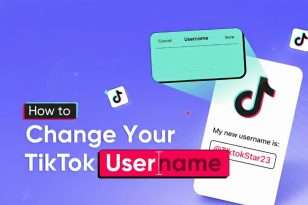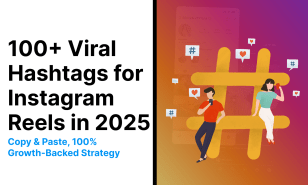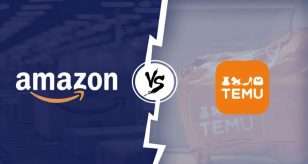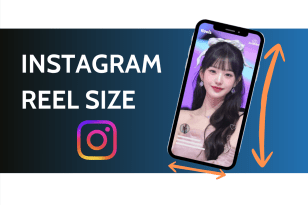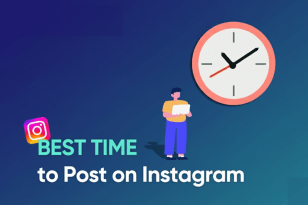Apps like Instagram are becoming increasingly popular in 2025 as creators and brands look for new ways to connect and grow. With Instagram’s feed more crowded than ever—filled with polished posts and complex algorithms—it’s harder to stand out organically. That’s why many users are shifting toward trending social platforms that offer authentic engagement and creative flexibility.
In this Orichi guide, we’ll explore the top 22 Instagram alternatives, help you choose the best fit for your goals, and share smart strategies to transition smoothly while maintaining your audience and brand identity.
For Video Content
1. TikTok
TikTok stands out as one of the top Instagram alternatives in 2025, attracting over 1.59 billion users worldwide—mainly Gen Z and Millennials. Unlike Instagram Reels, which favors existing followers, TikTok’s smart algorithm pushes videos to new audiences, helping creators go viral fast.
This year, the platform emphasizes authentic storytelling, inclusivity, and AI-powered creation tools like TikTok Symphony for effortless content production.
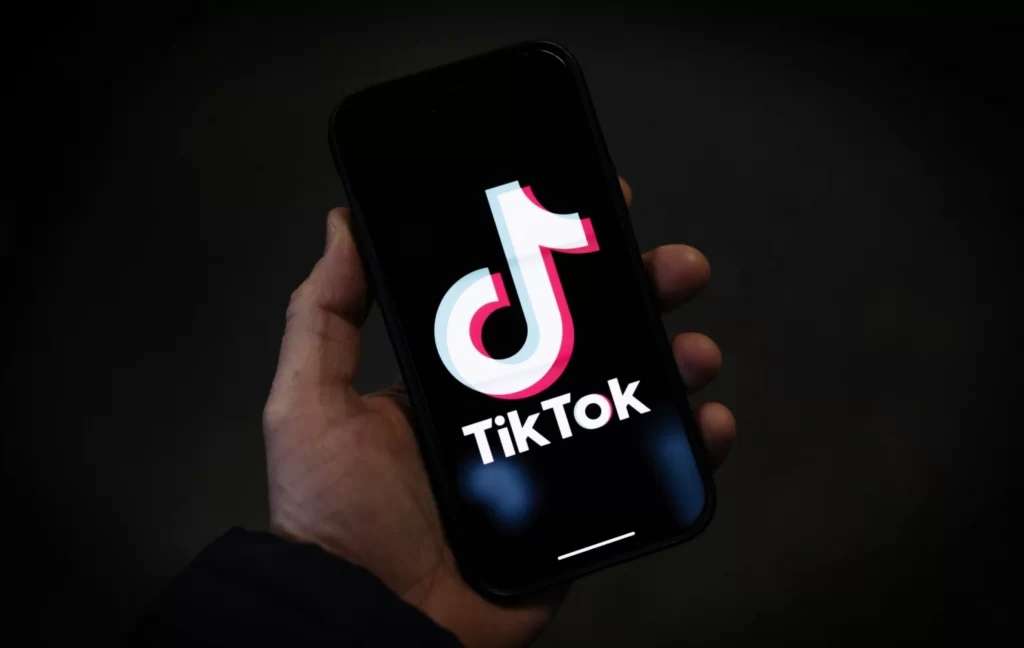
Pros
- Massive user base, especially Gen Z
- Intelligent algorithm for quick virality
- Engaging editing and trending tools
- Integrated eCommerce via TikTok Shop
Cons
- Highly competitive, tough to stand out
- Skews toward younger demographics
- Algorithm-driven reach can fluctuate
- Short-lived content, poor for long-term archiving
Best For: Brands targeting Gen Z and Millennials—especially in fashion, beauty, home, and lifestyle—seeking viral exposure, creative storytelling, and live shopping opportunities.
2. Triller
Triller is a music-driven social video platform built for short-form, high-energy content. It lets users create professional music videos using AI-powered editing and a vast track library.
What makes Triller unique is its deep connection with the music industry—offering artist collaborations, brand partnerships, and live event features that fuel creative engagement.
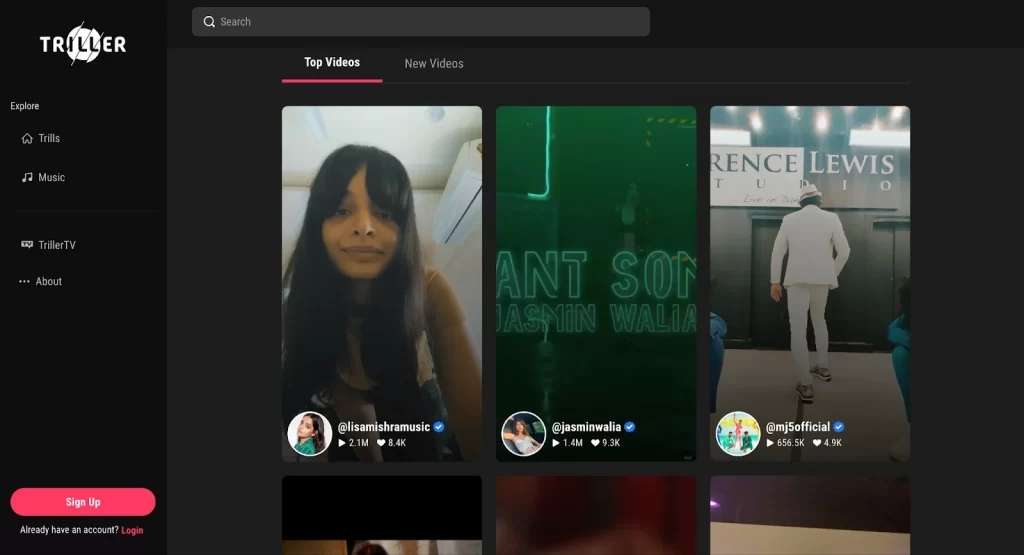
Pros
- Music-first short-form platform with AI-assisted editing
- Strong ties to artists, labels, and the music scene
Cons
- Smaller, niche audience compared to Instagram’s reach
- Limited content variety—mainly music and dance
- Lacks advanced analytics and eCommerce tools
Best For: Musicians, dancers, and creators focused on music-driven storytelling, viral challenges, and performance-based videos.
3. Likee
Likee rounds out the list of apps like Instagram as a global short-video platform similar to TikTok. However, instead of focusing solely on viral trends, Likee emphasizes AR-powered effects, visual creativity, and interactive live streaming.
With its rich suite of editing tools, filters, and special effects, creators can easily craft eye-catching, engaging short-form videos. Likee’s trending challenges and discovery system also make it easy to reach new audiences and build active communities.
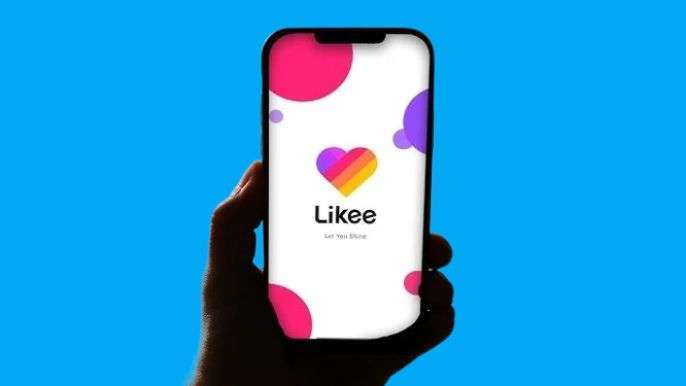
Pros
- Powerful short-video tools and advanced effects
- Trending challenges boost visibility and audience growth
- Global community reach
Cons
- Limited monetization (mainly virtual gifts and live streams)
- Focused only on video format
- Restricted access in India
Best For: Creators and sellers targeting young, trend-focused audiences who thrive on short, viral video content and interactive challenges.
4. Facebook
Facebook remains the world’s largest social network, connecting over 3 billion monthly active users across all age groups. As part of the Meta ecosystem, it provides a full suite of tools—content sharing, messaging, groups, events, marketplace, Shops, and AI-powered ad systems.
Unlike Instagram, Facebook supports multiple content types—videos, stories, events, and live streams—making it ideal for brand storytelling, product launches, and community growth.
Pros
- Massive global audience of 3+ billion users
- Versatile content formats: text, photo, video, events, and more
- Strong community building through groups and pages
- Robust analytics, marketplace, and business tools
Cons
- Limited organic reach due to algorithm shifts
- Less visually refined and mobile-focused than Instagram
Best For: Brands and sellers aiming for targeted advertising, community engagement, and event promotion while reaching a wide, multigenerational audience.
For Photography and Visuals
5. Pinterest
Pinterest is a visual discovery platform that operates more like a search engine than a social network. Instead of focusing on real-time sharing, it helps users explore and save ideas—from fashion and home décor to recipes and shopping inspiration. By 2025, over 500 million people use Pinterest monthly, mainly women, Millennials, and Gen Z.
Sellers can set up free business accounts and leverage tools like Shoppable Pins, visual search, SEO, and AR Try-On to boost visibility, traffic, and sales.

Pros
- Strong female and Millennial audience
- Evergreen, searchable content instead of fleeting posts
- Ideal for fashion, beauty, home, food, and lifestyle niches
- Built-in eCommerce features like Product Pins and Shopping tabs
Cons
- Smaller, less interactive community than TikTok or Instagram
- Weaker real-time engagement
- Audience concentrated in the US and Europe
Best For: Creators and sellers in lifestyle, fashion, home, and food who want long-lasting, searchable content that drives consistent traffic and shopping inspiration.
6. Vero
Vero is an ad-free, algorithm-free social platform built to encourage authentic connections between creators, brands, and audiences. Though its user base is smaller, it attracts those seeking a curated, non-commercial space for genuine engagement.
Users can share photos, videos, music, and links in a chronological feed—ensuring posts reach followers directly without algorithmic bias or paid boosts.
Vero’s focus on privacy and meaningful interaction makes it ideal for creators who value depth over reach.
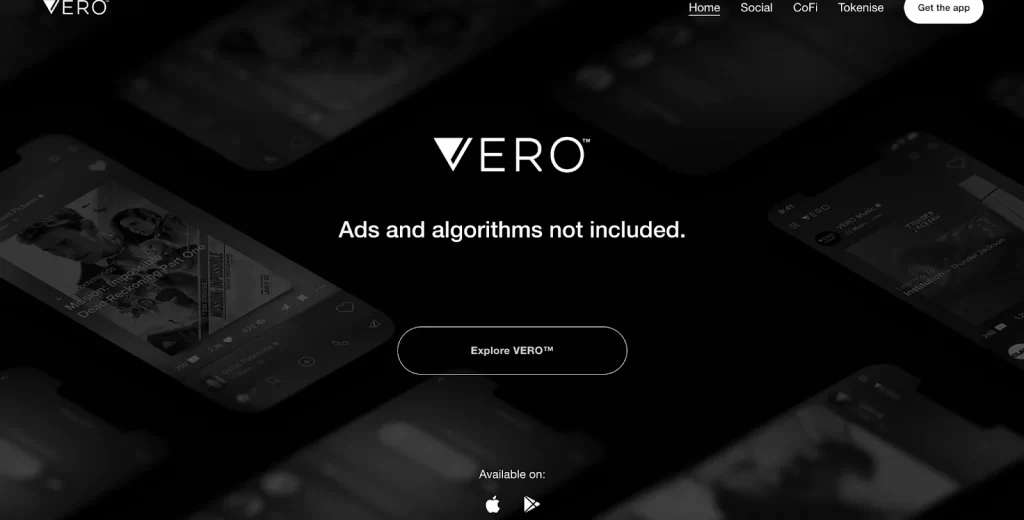
Pros
- Supports multiple content formats
- No ads or algorithms—feeds are chronological and transparent
Cons
- Lacks advanced eCommerce or influencer tools
Best For: Photographers, artists, and visual creators who want to share high-quality content in a clean, chronological, and ad-free environment.
Read more: Best Time to Post on Instagram: A Complete Guide for 2025
7. Retrica
Retrica is a creative camera and photo-editing app celebrated for its real-time filters and vintage-style effects. It enables users to capture expressive photos and videos, make collages, and apply edits both in real time and after shooting.
With tools like stickers, GIFs, multi-shot grids, and collage creation, Retrica turns everyday moments into artistic visuals. It also integrates smoothly with social platforms like Instagram and Facebook for quick sharing.
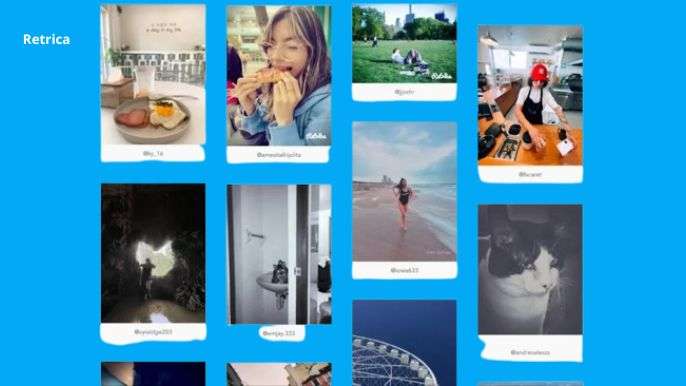
Pros
- Extensive editing tools with playful filters, GIFs, and collage options
- Distinct vintage and retro effects
- Easy sharing to major social platforms
Cons
- No built-in social feed or discovery system
- Limited to photo and video formats
- Lacks community interaction like comments or DMs
Best For: Users who enjoy creative photography and want a filter-rich, distraction-free camera app without social media pressure.
Lemon8
8. Lemon8
Lemon8 is a lifestyle photo and video-sharing app created by ByteDance, the company behind TikTok. Since its launch in 2020, it has grown into a visually rich platform that combines the aesthetics of Instagram, the inspiration of Pinterest, and the creativity of Canva—focusing on wellness, travel, food, and beauty.
Its design-driven interface helps creators craft visually appealing posts with long captions, detailed storytelling, and easy cross-platform sharing through TikTok integration.
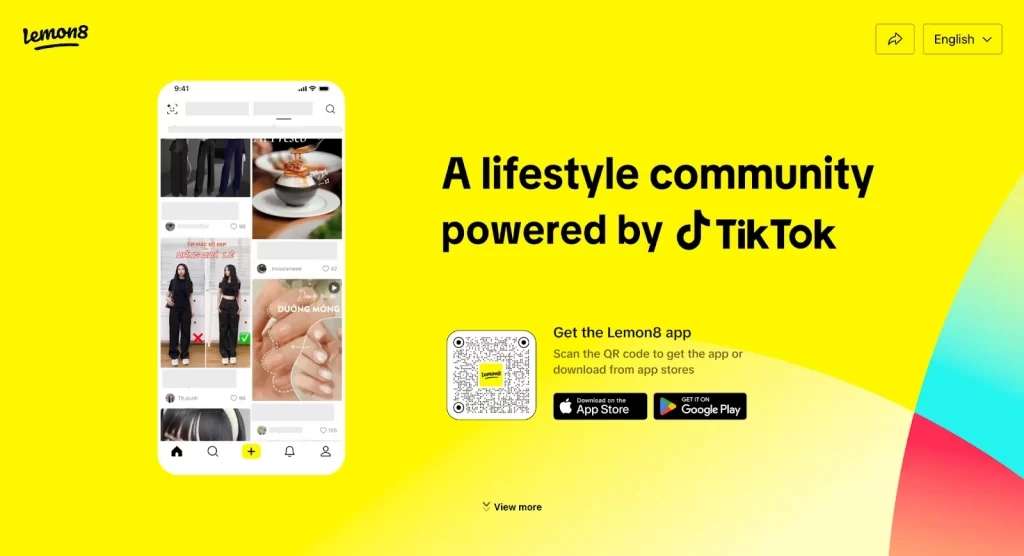
Pros
- Merges Instagram and Pinterest visuals with TikTok’s video style
- Supports long-form captions and storytelling
- Includes built-in design and engagement tools
Cons
- Smaller, growing user base
- Lower brand awareness compared to Instagram
Best For: Lifestyle, beauty, travel, and wellness creators seeking to produce polished, story-driven content with high visual appeal.
9. Imgur
Imgur is a leading image-sharing and hosting platform famous for its viral, community-driven content. With millions of active users, it lets you upload, comment on, and share photos, GIFs, and short videos effortlessly.
Unlike traditional social apps, Imgur thrives on humor, creativity, and internet culture. Its upvote/downvote system surfaces the most engaging memes, visuals, and pop-culture moments, keeping the platform dynamic and fun.
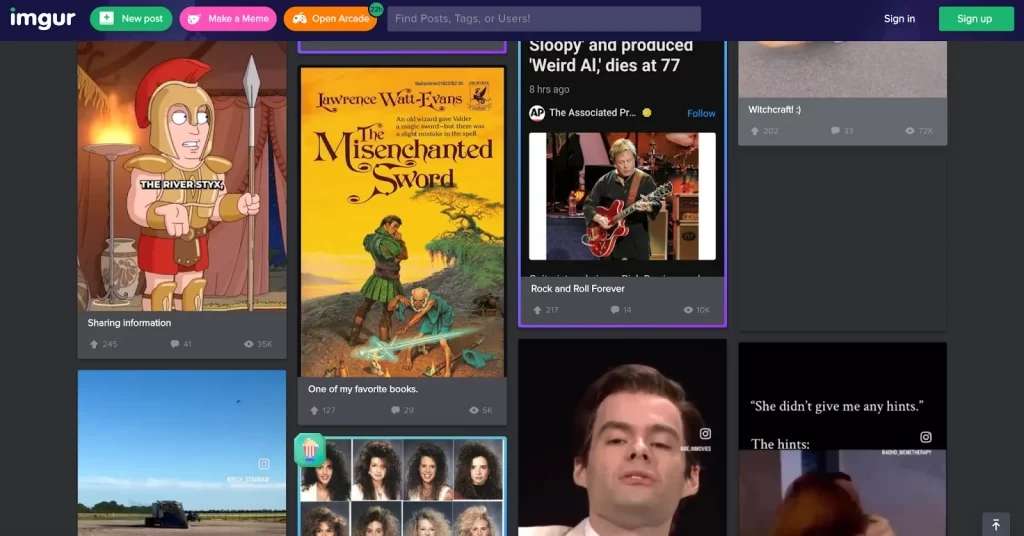
Pros
- Massive library of entertaining and inspiring memes, GIFs, and images
- Strong community engagement through voting and comments
Cons
- Meme-heavy content may not suit all audiences
Best For: Creators who enjoy sharing diverse visual content—memes, images, GIFs, short videos, and pop-culture stories.
10. RedNote (Xiaohongshu)
RedNote, also known as Xiaohongshu, is a leading Chinese social commerce platform that merges lifestyle storytelling with shopping. It’s among the top Instagram-like apps in China, offering a unique space for authentic content and eCommerce integration.
The app attracts young, urban users who share detailed product reviews, travel diaries, shopping insights, and everyday lifestyle posts through photos and videos. With its advanced recommendation engine and built-in shopping links, users can easily discover and purchase products directly from posts.
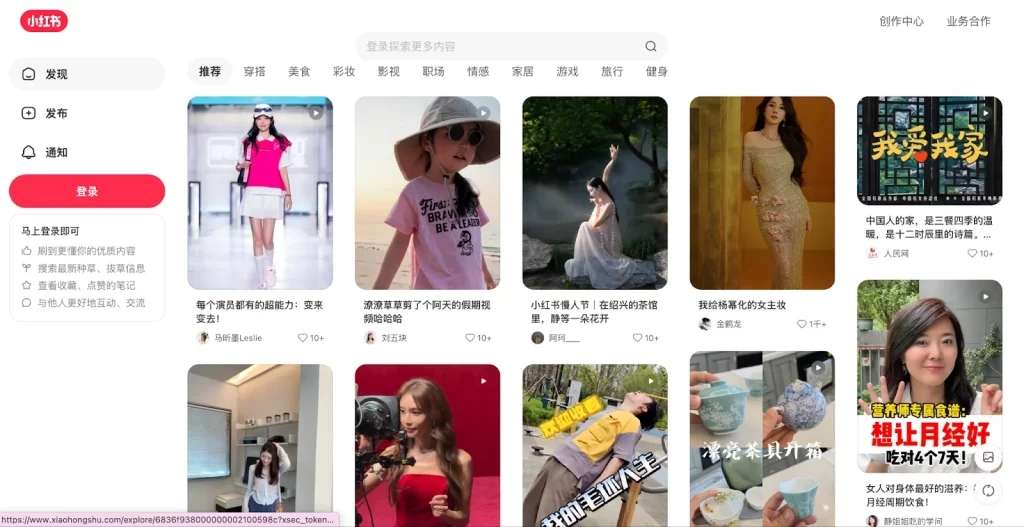
Pros
- Deeply engaged niche community built on authenticity and trust
- Strong buying intent—users spend time reading detailed reviews
- Organic, native advertising that blends seamlessly with content
Cons
- Primarily used by young urban women in China
- Limited presence outside Chinese markets
Best For: Beauty, fashion, lifestyle, and travel brands targeting Chinese consumers who seek authentic product recommendations and community-based shopping experiences.
For Authenticity and Real-Time Sharing
11. Snapchat
Snapchat remains one of the top Instagram alternatives in 2025, especially among Gen Z and Millennials. With over 850 million monthly active users, it centers on real-time, short-lived content through features like Stories, Spotlight, and Discover—ideal for sharing short videos, AR experiences, and interactive campaigns.
In early 2025, Snapchat rolled out a new monetization program, enabling creators to earn from Stories and longer Spotlight videos, solidifying its position as a powerful platform for both sellers and creators.
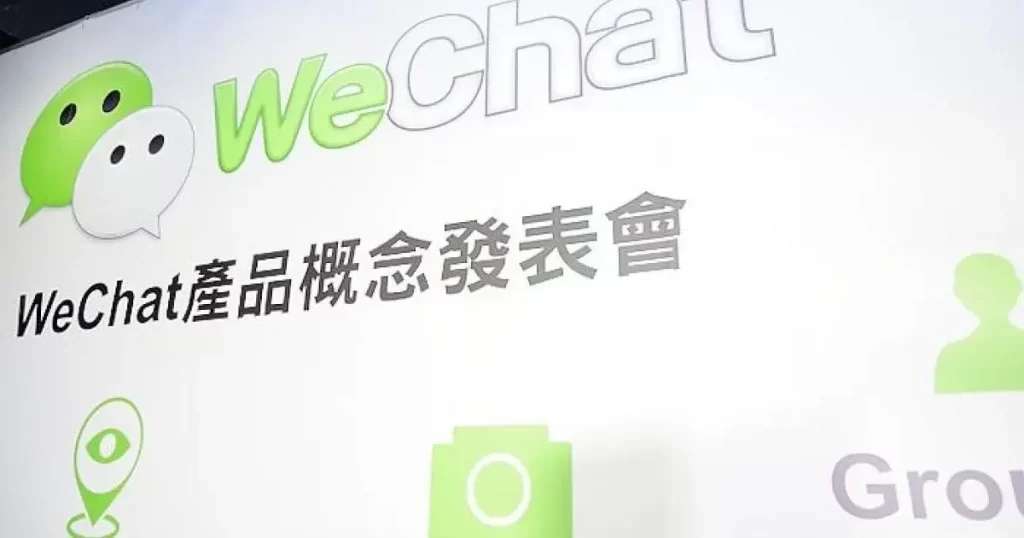
Pros
- Strong Gen Z and Millennial audience (75% of users)
- Real-time, disappearing content that feels authentic
- Stories, Spotlight, and Discover foster discovery and engagement
- Advanced AR filters and lenses boost interaction
Cons
- Limited appeal to older demographics
- Short-lived content limits long-term visibility
- Smaller creator economy than TikTok or Instagram
Best For: Brands and creators targeting Gen Z and Millennials who want authentic, real-time engagement using AR effects, Stories, and viral Spotlight videos.
12. Threads
Threads is a text-based social platform created by Meta and fully integrated with Instagram. By 2025, it has grown to over 350 million monthly active users, becoming one of the fastest-rising apps like Instagram.
Threads focuses on real-time conversations, allowing creators and brands to organize posts into threaded discussions while controlling privacy settings for each thread. Its seamless link with Instagram lets users connect with existing followers, making it easy to share updates, spark conversations, and grow engaged communities around trending topics.
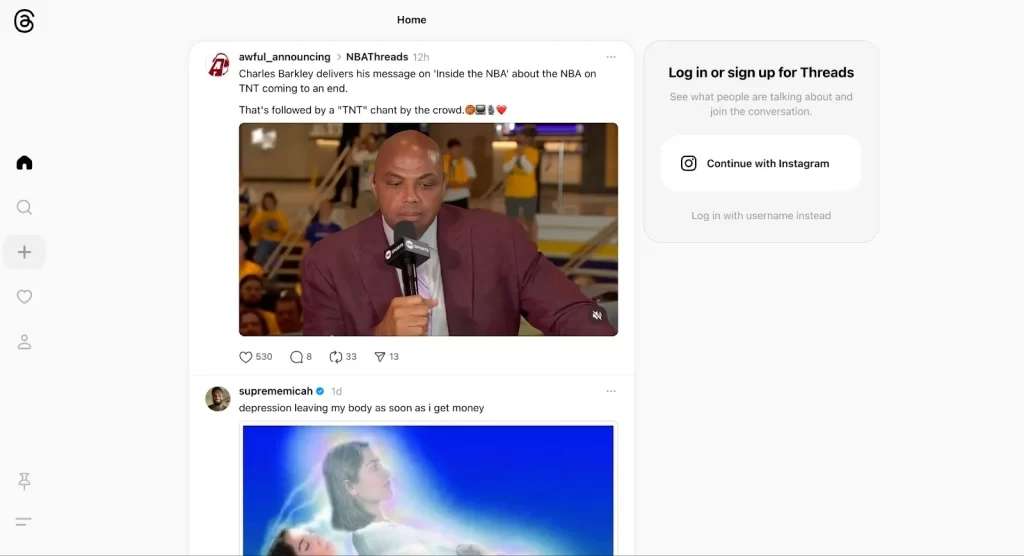
Pros
- Smooth integration with Instagram for cross-posting and audience access
- Ad-free, community-driven experience
- Great for interactive discussions and updates
Cons
- Limited availability in some regions
- Fewer analytics and scheduling tools compared to Instagram
Best For: Creators and sellers building text-first communities who want to encourage real-time discussions and deepen engagement with their Instagram audience.
13. X (formerly Twitter)
X, previously known as Twitter, remains one of the top Instagram alternatives for creators and brands aiming to boost visibility and connect through real-time conversations. In 2025, the platform hosts around 586 million monthly active users, with over half aged 18–34.
With X for Business, sellers can leverage catalog ads, promoted posts, and trending topics to increase traffic and sales. Its fast-paced environment and global audience make it ideal for brands that thrive on immediacy, timely updates, and interactive engagement.
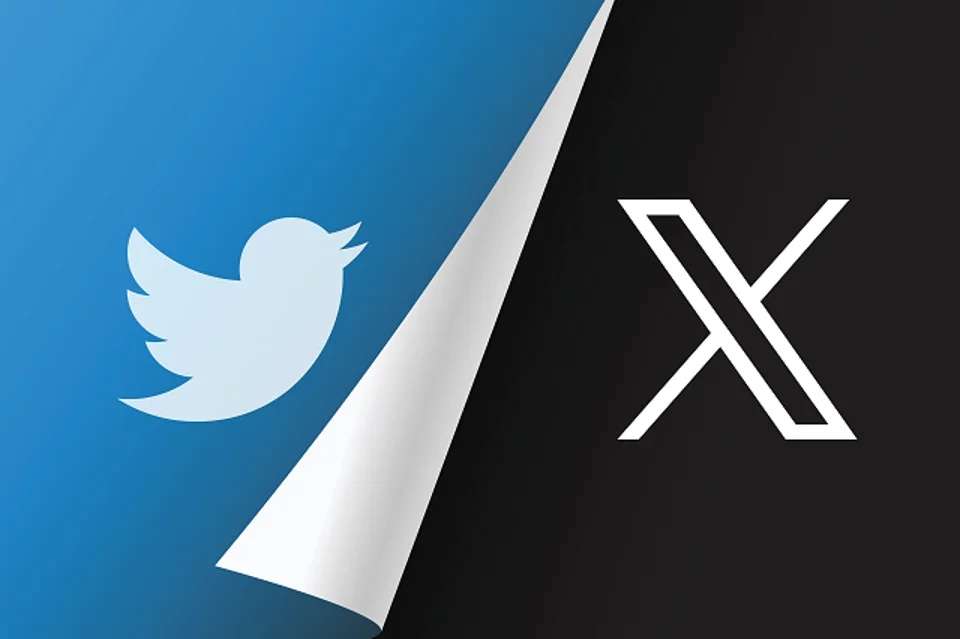
Pros
- Excellent for real-time discussions and news sharing
- Large, active, and globally connected user base
- Great for building brand personality and public dialogue
- Effective ad options through promoted posts and trends
Cons
- Fast content turnover; posts disappear quickly
- Less suited for visual-first brands
- Limited monetization options compared to Instagram or TikTok
- Engagement levels can fluctuate
Best For: Brands and creators who want to share quick updates, join trending conversations, and build authentic engagement through real-time communication.
14. Locket
Locket is a personal photo-sharing app that sends real-time images directly to friends’ home screens through a widget. Initially launched as a small project, it quickly became popular for its intimate, private sharing experience—perfect for staying close with family or friends.
Photos appear instantly on each other’s devices, and with a 20-friend limit, Locket keeps interactions genuine and personal, far removed from the broad exposure of platforms like Instagram. However, its limited audience makes it unsuitable for large-scale marketing or brand promotion.

Pros
- Real-time, private photo sharing straight to home screens
- No public feed or algorithmic influence
Cons
- No filters, editing tools, or discovery features
- Restricted to a small circle of friends
- Lacks monetization or advertising options
Best For: Creators and small sellers focused on personal branding, tight-knit communities, or offering exclusive, private content for close audiences or VIP customers.
15. BeReal
BeReal, launched in December 2019, has grown to about 16–33 million monthly active users by 2025, mainly Gen Z and young adults in the U.S. and Europe.
The app sends a daily notification at a random time, prompting users to take a photo within two minutes using both front and back cameras—capturing real, unfiltered moments from their lives.
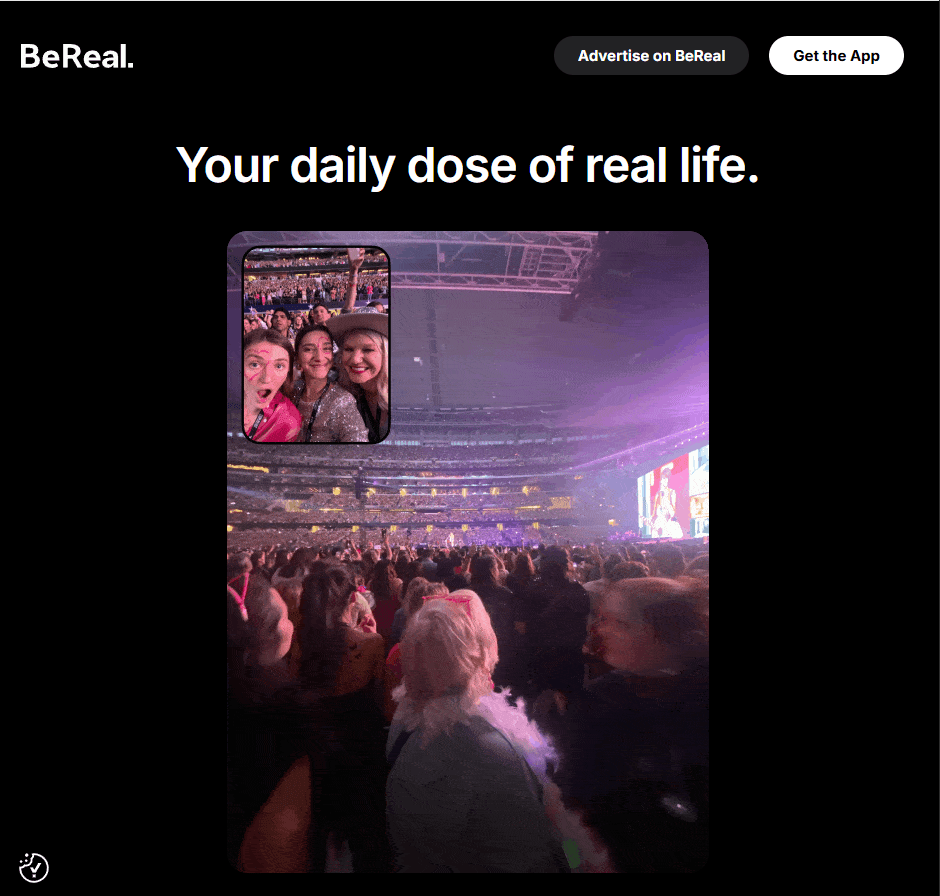
Pros
- Encourages authenticity through spontaneous, unedited photos
- Eliminates social pressure and the need for perfect content
Cons
- Limited commercial and marketing features
Best For: Individuals and small communities who value genuine, real-time sharing without filters or curation—not ideal for most brands or sellers.
16. WeChat
WeChat, known as “the Everything App” and called “Weixin” in China, is a powerhouse social platform owned by Tencent. With over 1.33 billion monthly active users, it ranks as the sixth-largest social media network globally and the dominant platform in China.
Unlike Instagram, WeChat mainly serves a domestic Chinese audience, though it also has users across Asia. Beyond messaging, WeChat enables voice and video calls, bill payments, shopping, games, and even taxi bookings—all within one ecosystem.
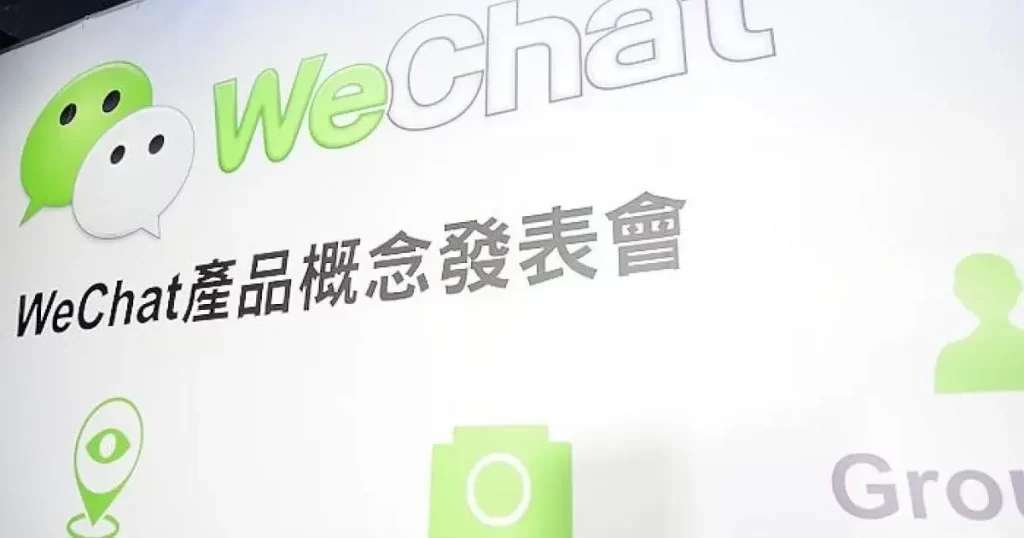
Pros
- All-in-one platform for messaging, social feed (Moments), payments, shopping, and mini-programs
- Vital for reaching Chinese consumers; fully accessible in China
- Built-in translation and localization for Chinese users
Cons
- Limited use outside China
- Privacy and censorship issues under government oversight
- Complex interface and registration process
Best For: Brands and sellers targeting Chinese markets or looking to engage consumers within China’s digital ecosystem.
For Niche Communities and Content
17. Reddit
Reddit is a massive online community with around 606 million monthly active users as of 2025. Organized into thousands of topic-specific subreddits, it allows sellers and brands to join or sponsor discussions directly related to their products or industries.
With support for text, image, and video posts, as well as live audio rooms and a growing short-form video feed, Reddit enables brands to launch products, gather feedback, and engage with users in real time. Its upvote system and community moderation ensure that valuable, authentic content rises to the top—making it a strong platform for credibility and trust-building.
Pros
- Text-based discussions encourage deeper, more meaningful conversations
- Highly engaged, niche communities
- Supports diverse content types: text, images, videos, and links
Cons
- Limited mainstream appeal due to fragmented audiences
- Less emphasis on visual storytelling or influencer marketing
Best For: Sellers, brands, and creators aiming to connect with niche audiences, build credibility, and foster authentic engagement through discussion-driven content.
18. Tumblr
Tumblr is a microblogging and social networking platform launched in 2007 by David Karp and now owned by Automattic. With about 135 million monthly active users worldwide, it ranks among the top 10 most-visited social media platforms in the U.S.
As one of the notable apps like Instagram, Tumblr lets users build fully customizable blogs to share diverse content—text, photos, quotes, links, audio, and videos—offering unmatched creative freedom and community expression.
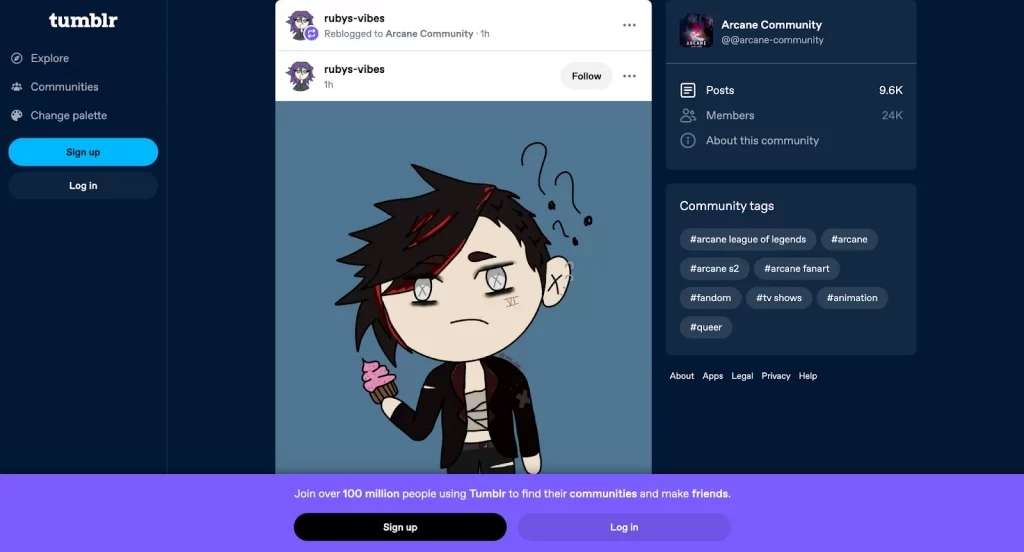
Pros
- High engagement across niche, interest-based communities
- Supports both microblogging and long-form storytelling
- Flexible for various content types and creative expression
Cons
- Limited ad options and paid promotion tools
- Weak analytics and business insights
Best For: Artists, fandoms, and creatives who want to share multimedia content and enjoy a personalized, highly customizable social experience.
19. Mastodon
Mastodon is a decentralized, open-source social media platform that stands out among apps like Instagram for its focus on privacy, transparency, and user autonomy. It allows users to post text, images, videos, and polls while maintaining full control over their data and experience.
Unlike algorithm-driven platforms, Mastodon displays posts chronologically and operates without ads, ensuring an authentic and distraction-free feed. It also supports extended text limits, custom emojis, content warnings, and multimedia sharing.
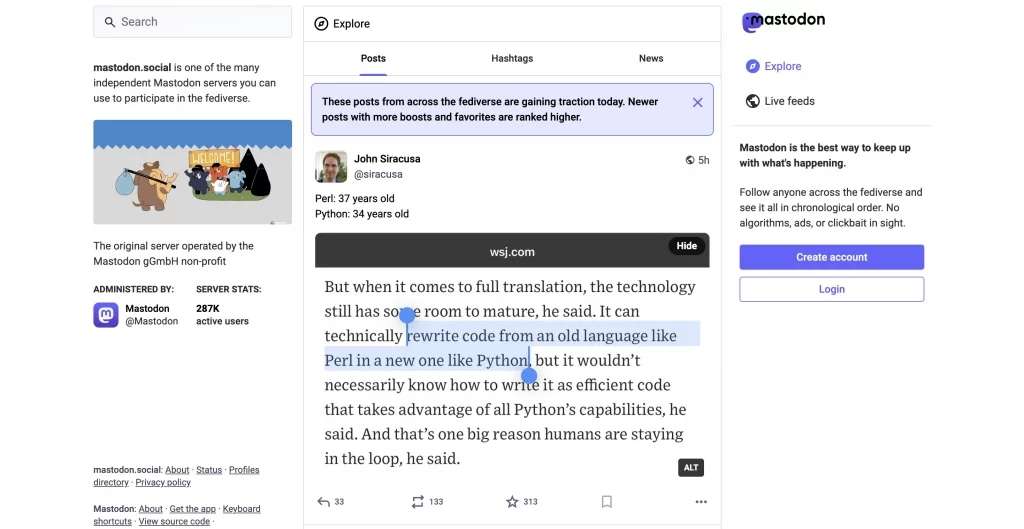
Pros
- Fully decentralized and open-source, offering strong privacy and moderation control
- Chronological, ad-free feed with no algorithmic bias
Cons
- Smaller, less active global community
- Limited tools for eCommerce or influencer marketing
Best For: Users and brands who prioritize ethical communication, community-driven engagement, and complete control over their social presence.
20. Bluesky
Bluesky is a decentralized social platform born from a project led by Twitter co-founder Jack Dorsey. By 2025, it has grown to around 30 million users, giving individuals full control over their content, data, and audience.
Unlike traditional networks, Bluesky lets users move their profiles and followers across servers, creating a customizable, privacy-first social ecosystem. The platform prioritizes slow, community-driven growth built on transparency, trust, and creative freedom rather than mass popularity.
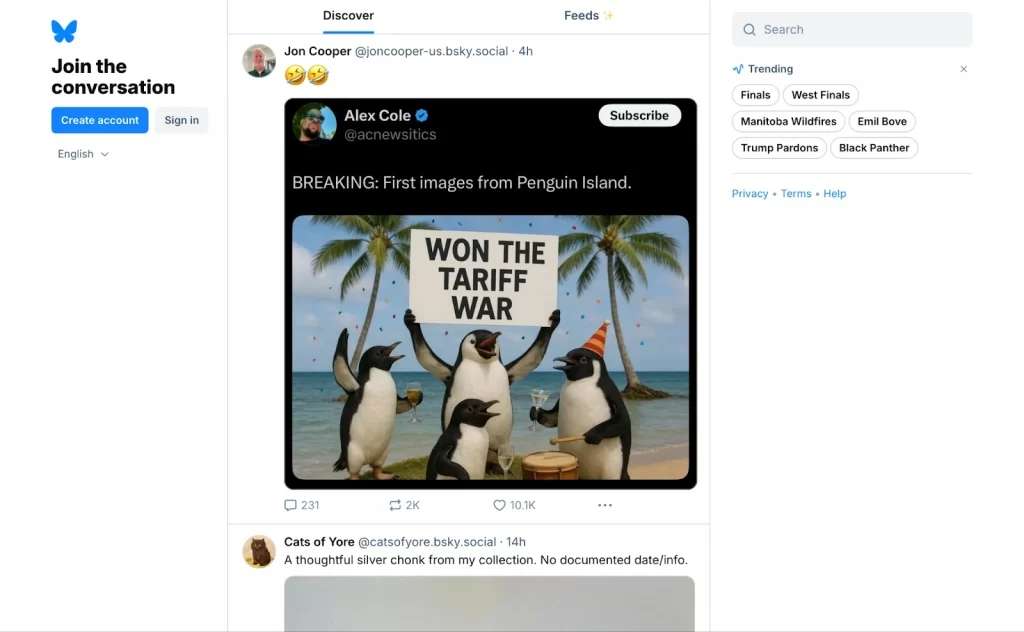
Pros
- Decentralized and privacy-focused, empowering users with control over data and algorithms
- Customizable experience with transferable profiles and audiences
- Engaged, early-adopter community
Cons
- Smaller, more exclusive user base than Instagram
- Still evolving, with limited features and integrations
Best For: Creators, brands, and niche communities who value personalization, transparency, and greater control over how they connect and grow online.
21. Clubhouse
Clubhouse is a social audio platform built around live, voice-only chat rooms where users can join, host, or moderate real-time conversations on virtually any topic. Unlike visual-focused platforms, it emphasizes spontaneous, authentic dialogue and community interaction through sound.
Key features include private or public virtual rooms, scheduled events, recurring interest-based clubs, and a backchannel for direct messaging—making it an ideal space for networking and thought leadership.
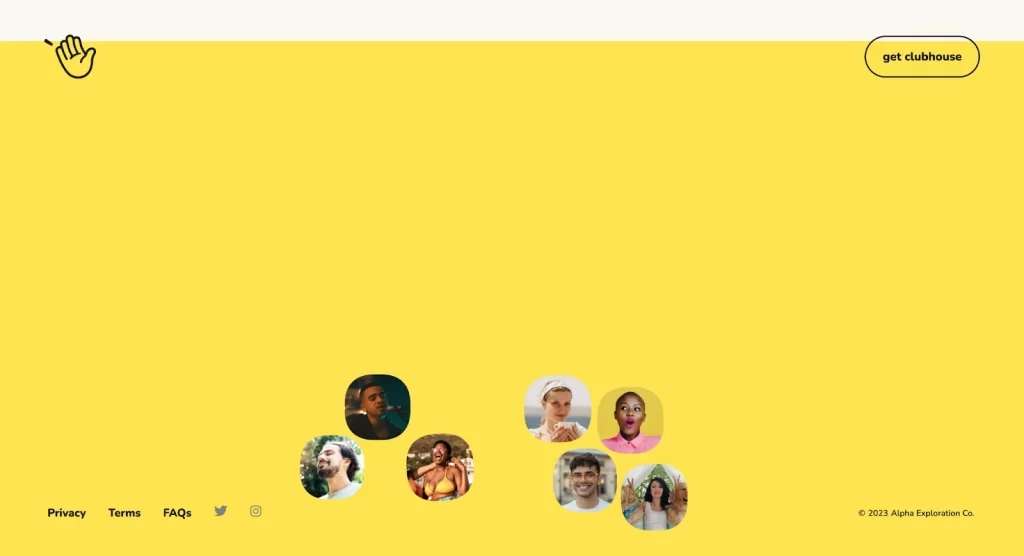
Pros
- Real-time, audio-only format encourages genuine networking and idea exchange
- No visual pressure—perfect for voice-first communicators
- Great for trend spotting, community building, and live discussions
Cons
- Limited discoverability and content search
- Smaller, niche audience compared to visual social networks
Best For: Brands and professionals focusing on authentic networking, live discussions, and authority building through voice-driven engagement.
22. QQ
QQ is a versatile instant messaging and social networking platform developed by Tencent. It offers a broad range of services—instant messaging, online gaming, music, entertainment, and virtual gifting—all within a single ecosystem.
With over 562 million active users aged 16–26, QQ remains highly popular among younger audiences seeking an interactive, entertainment-driven experience. The platform is available on Windows, Mac, Linux, Android, and iOS, with both Chinese and international versions supporting multiple languages.

Pros
- Extensive features: messaging, gaming, music, blogging, and social networking
- Supports multiple languages for international accessibility
- Strong presence among younger users
Cons
- Primarily focused on the Chinese market
- Interface can feel cluttered or outdated
- Some features remain limited to Chinese-language users
Best For: Brands and sellers targeting Chinese Gen Z and youth audiences looking to engage in entertainment-rich, social experiences.
Steps to Choosing the Right Instagram Alternatives
Selecting the right apps like Instagram depends on your goals, content type, and audience. Follow these steps to find the best fit for your needs.
Step 1: Define Your Goals and Priorities
Clarify your purpose—whether personal sharing, brand growth, or community-building. Ask yourself:
- Do you want to focus on visual content like photos or videos?
- Are you seeking meaningful discussions or niche communities?
- Do you prefer real-time updates and quick interactions?
Step 2: Prioritize Key Features
Once you know your goals, list the essential features—privacy settings, eCommerce tools, and supported content formats. Compare platforms based on these.
Different platforms offer different strengths:
- Prefer chronological feeds? Try Vero or Pixelfed.
- Focus on visuals? Choose Pinksky or Pixelfed.
- Want broader content? Explore Tumblr or Bluesky.
Selecting the right features ensures your chosen platform aligns with your creative style and privacy expectations.
Step 3: Evaluate Your Audience
Identify your target audience—consider age, interests, location, and behavior. Research where they’re most active using resources like Pew Research or Statista, or by observing similar creators.
Match your platform choice to their habits:
- Casual browsing → Instagram or Pinterest
- Active discussions → Reddit
- Real-time updates → X (Twitter)
By aligning your platform with your audience’s preferences, you’ll increase engagement and avoid wasting time on inactive channels.
Step 4: Test and Monitor Your Channels
After selecting one or two platforms, test their performance. Use analytics to track engagement, follower growth, and content reach.
For instance, you might post on both Facebook and Instagram, but find Facebook drives more conversions. Use these insights to focus your time and resources on what delivers the best results.
Tips for Transitioning to Apps Similar to Instagram
Shifting from Instagram to platforms like Facebook, X, Reddit, or Tumblr requires strategy to retain followers and adapt your content effectively. Follow these concise steps for a seamless transition.
1. Choose the Right Platform
Align your goals with each platform’s core strengths. Picking the wrong platform can waste effort on mismatched audiences or features.
2. Adapt Your Content
Customize your Instagram-style posts for the new environment:
- Use short, hashtag-driven text on X.
- Write long-form discussions on Reddit.
- Share polished visuals on Pinterest or Tumblr.
3. Rebuild Your Audience
Announce your move on Instagram through posts or Stories with direct links to your new profile. Cross-promote and engage with users to attract followers quickly.
4. Optimize Your Profile
Keep a consistent username and profile picture. Write a clear bio such as “Daily updates on X” and include relevant external links to your new platforms.
5. Test Engagement
Post regularly for 1–2 months, tracking engagement metrics like likes, comments, and upvotes. Adjust your approach based on what performs best—timely updates on X or community-focused threads on Reddit.
6. Maintain Your Instagram Presence
Leave a pinned post or Story highlighting your new platform. This helps existing followers transition smoothly and ensures you don’t lose your established audience.
Best Instagram Alternative: FAQs
What is the best alternative to Instagram?
The best alternative depends on your goals. TikTok is ideal for short videos, Pinterest for inspiration and shopping, Vero for authenticity, and Reddit for niche discussions.
Are there any social media apps like Instagram?
Yes. Platforms such as TikTok, Snapchat, Pinterest, Lemon8, and Vero all offer creative and visual experiences similar to Instagram, each with unique features and audiences.
What is the hottest social media right now?
In 2025, TikTok, Threads, and X (formerly Twitter) lead in engagement and cultural influence, while Pinterest and Lemon8 continue to grow in lifestyle and shopping content.
At what age do people stop using Instagram?
Most users remain active through their 30s, but many older users shift to community-based or text-focused platforms like Facebook, Reddit, or Threads for deeper engagement.
Discover These Best Apps Like Instagram Today!
While Instagram remains a dominant social platform, it’s not the only one worth your attention. If you’re seeking authentic engagement, niche audiences, or tools designed for your creative or business goals, exploring alternatives can unlock new opportunities.
In this guide, we’ve explored 22 of the best Instagram alternatives, practical steps for choosing the right one, and tips for transitioning smoothly.
Now is the perfect time to expand your presence to platforms that better match your goals and creative vision.
For more insights on eCommerce growth and social media strategies, visit our Blog or reach out for personalized guidance tailored to your brand.
![]()



